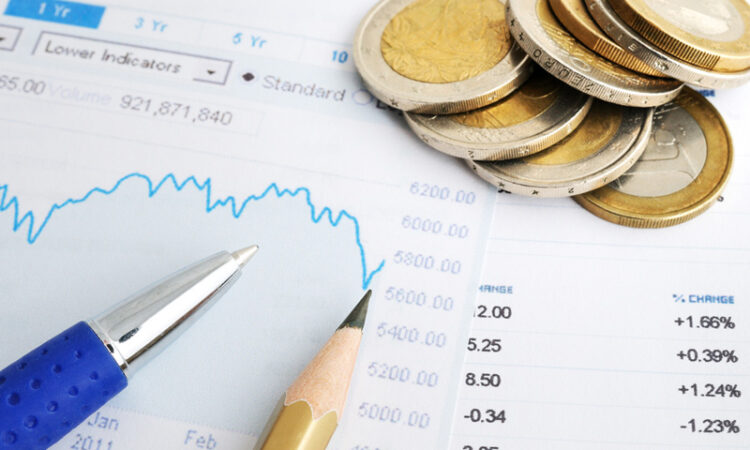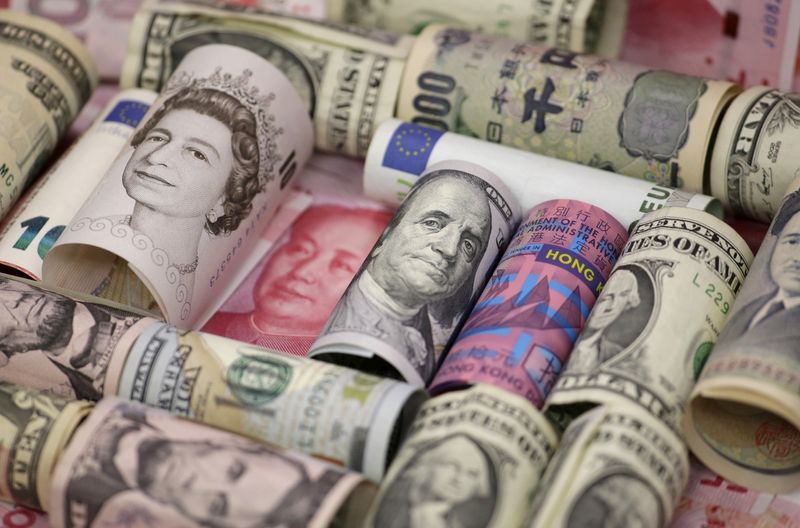

© Reuters. Euro, Hong Kong dollar, U.S. dollar, Japanese yen, British pound and Chinese 100-yuan banknotes are seen in a picture illustration shot January 21, 2016. REUTERS/Jason Lee/Illustration/File Photo
By Brigid Riley
TOKYO (Reuters) – The U.S. dollar held steady on Friday as traders weighed how surprisingly strong economic growth data would impact the Federal Reserve’s rate path and awaited a key inflation gauge later in the day for more clues.
The euro, meanwhile, was on the backfoot as traders ramped up bets of a rate cut in April after the European Central Bank’s (ECB) latest monetary policy meeting on Thursday.
In the United States, official data on the advance GDP estimate showed gross domestic product in the last quarter increased at a 3.3% annualised rate, overshooting the consensus forecast of 2% growth. It also showed inflation pressures subsiding further.
“U.S. GDP data re-affirmed soft landing hopes for the U.S. economy, but the bond market focused more on the disinflation component of the report which pushed yields lower. The dollar, however, held up,” said Charu Chanana, head of currency strategy at Saxo in Singapore.
The , which measures the greenback against a basket of major currencies, hovered around 103.53 during Asian hours after climbing about 0.2% overnight.
The benchmark , on the other hand, slid down to 4.11%. [US/]
“Pressure on yields and dollar could increase if December PCE (personal consumption expenditures) comes in softer than expectations today,” Chanana added.
The dollar has gained about 2% so far this year as market expectations have moderated somewhat from late last year. Markets are pricing in a 50% chance of a rate cut in March, according to the CME FedWatch tool, easing from 75.6% a month ago.
The euro was last down $1.08385 but holding above the six-week low of $1.08215 touched on Thursday.
The ECB stood pat as expected at its policy meeting the previous day, although traders have increased bets that the bank will cut interest rates from April as they perceived policymakers are growing more comfortable with the inflation outlook.
The ECB’s pushback against the pricing in of an April rate cut was “less direct and positive direction was noted on wages,” which gave a boost to expectations and “emphasises a bearish outlook for the euro,” said Chanana.
Sterling was down 0.10% on the day, trading around $1.2698. The Bank of England will announce its latest decision on interest rates next Thursday.
Elsewhere, the yen bounced around the upper 147 range against dollar, and last sat at 147.77.
Data on Friday revealed core inflation in Japan’s capital slowed to 1.6% in January from a year earlier, below the central bank’s 2% target.
“The plunge in inflation to well below 2% in Tokyo last month was broad-based, casting doubt on the Bank of Japan’s willingness to end negative interest rates,” Capital Market’s Head of Asia-Pacific Marcel Thieliant wrote in a note.
Minutes released on Friday of the BOJ’s December meeting, meanwhile, showed policymakers actively debated in December the conditions for phasing out stimulus.
The focus in coming months will be on whether wages will rise enough to underpin consumption and help Japan sustainably achieve the Bank of Japan’s 2% inflation target.
In cryptocurrencies, bitcoin was last up 0.53% at $40,112.00. (This story has been corrected to change ‘hike’ to ‘cut’ in paragraph 2)


